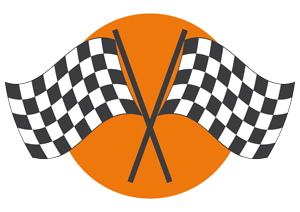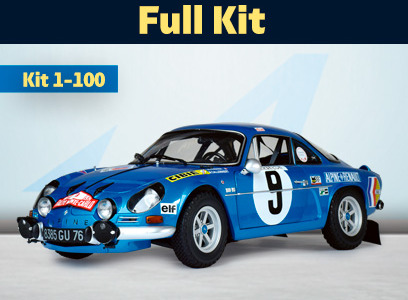-
MenuBack
-
COLLECTIONS
-
-
24h00 Le Mans
-
Alpine A110 1600S
-
Lancia 037
-
-
-
FULL KIT
-
-
FULL KIT
-
-
- ACCESSORIES
- Australian Cars
- MAQMADON by Ixo Collections
-
ASSEMBLY GUIDES
-
Undefined title
-
-
-
Blog Ixo
-
- FAQ
Gulf Petroleum
Gulf Petroleum
Motor racing in the blood
Like most major oil companies, Gulf entered motor racing from the mid-1960s.

This investment represents a formidable commercial showcase, but also an incomparable laboratory to test certain products under extreme conditions. The North American brand promotes itself with the advertising slogan "Gulf, quality has a name". But it is mainly by shining on the most prestigious circuits in the world that it will become known to the general public.
Since the early 1900s, Gulf Oil has been arguably one of the most evocative names in the petroleum industry. From the beginning, this company has been at the forefront of innovation and customer service. The main key to its success was to create and consolidate motorsport partnerships, which allowed it to cultivate an image based on the traditional sky blue and orange colours, instantly recognizable around the world. For a decade, the Gulf name was associated with victory, first sponsoring leading manufacturers such as Ford and Porsche, and then creating its own sports structure.

The Porsche 917 painted in Gulf colours is certainly the most iconic racing car of the early 1970s. © IXO Collections SAS - Tous droits réservés. Crédits photo © Archives & Collections Dominique Pascal
A bit of history
The origins of this brand of fuels and lubricants date back to 1901 when a major oil well was discovered in Spindletop, Texas. An operating company was established, the Guffey Petroleum Company, that was renamed the Gulf Oil Company in 1907. In the following decades, Gulf innovated both from a technical point of view (offshore drilling) and from a commercial point of view. (founding the first Drive-In) and becomes one of the largest companies in the United States. In 1928 it participated in the creation of the powerful oil consortium "The Seven Sisters" together with fellow countrymen Exxon, Chevron, Mobil, Texaco, as well as the British companies Anglo Persian Oil Company and Royal Dutch Shell. This allowed it to hold a dominant position on the international market until the first oil shock of 1971. From the 1930s, Gulf promoted its products with two Grumman aircraft in the brand's colours, which took part in air shows in Europe. Later, in 1969, Gulf associated his name with the fantastic Apollo 11 epic, in collaboration with the American television channel NBC. Two years later, in the 1971 Le Mans film, the brand's orange and blue colours are highlighted, with Steve McQueen becoming the face of the American oil company.

On February 1, 1970, Pedro Rodriguez and Leo Kinnunen won the 24 Hours of Daytona: the first victory for the Porsche 917 under the colors of Gulf-Wyer. © IXO Collections SAS - Tous droits réservés. Crédits photo © Archives & Collections Dominique Pascal
An exceptional partnership
In 1967, Gulf began communicating about auto racing by signing a partnership contract with England's John Wyer Automotive Racing Team that deployed two Mirage M1 prototypes (basically modified Ford GT40s) at the Le Mans 24 Hours. This is the first time that a car takes part in an international race with the distinctive colours of this oil company. In the next two editions of the prestigious Sarthoise race, Team John Wyer's blue and orange Ford GT40s win on a big scale. In 1968, the Gulf sponsored Wyer team also helped Ford win the World Brands Championship. In 1970 and 1971, John Wyer and Gulf now driving Porsche 917s, taking 11 World Endurance Championship victories, including two at the 24 Hours of Daytona. In 1972, Gulf continued its course in the competition through its own organization, Gulf Research Racing Company, based in Slough, England and directed by engineer John Horsman. Despite the many successes of the Mirage M6, then the Gulf-Mirage GR7 and GR8 designed by Len Bailey, the team withdrew from competition in early 1976. In 1994, Gulf returned to the circuits, the Gulf-Porsche K8 Kremer Oil Racing placed 6th at Le Mans that year.

The signature Gulf colors were featured on the John Wyer team's Mercedes truck. © IXO Collections SAS - Tous droits réservés. Crédits photo © Archives & Collections Dominique Pascal
Three wins at Le Mans
After Ford officially retired from Endurance racing after two consecutive wins at the Le Mans circuit in 1966 and 1967, Gulf took over by incorporating Fords in its colours through John Wyer. At the 1968 Le Mans 24 Hours, Pedro Rodriguez and Lucien Bianchi became winners with their GT40. The following year, Gulf and John Wyer Automotive Engineering repeated their performance with the team of Jacky Ickx and Jackie Oliver. After withdrawing from the Wyer team in 1970, Herbert Mueller and Richard Attwood took second place in 1971 thanks to their 917 KH. From the following year, when the technical regulations of the three-liter prototypes changed, John Wyer and the Gulf team took over the Mirage chassis. In 1975, the Gulf-Mirage GR8, driven by Jacky Ickx and Derek Bell, delivered a third and final victory at the Le Mans circuit in a car with the famous Gulf livery.

Creator of Success
British engineer John Wyer (1909-1989) and his team JW Automotive Engineering Limited - founded in 1966 together with John Willment - former driver and boss of Formula 1 team DW Racing Enterprises - take Gulf to the highest level in the competition. John Wyer began his sports career in 1949 as manager of the David Brown team, which won the Le Mans 24 Hours in 1959 with an Aston Martin. From 1963, he led the GT40 program within Ford Advanced Vehicles, which would lead to victories at Le Mans in 1966 and 1967. Thanks to Ford, John Wyer met Gulf Oil Corporation vice president Grady Davis who agreed to act as sponsor. It was the beginning of a seamless collaboration that would last until 1976.

Renewal
After several years of irregular participation, Gulf returned to the race track in 2011 thanks to a team called Gulf Racing UK located at the Milton Keynes technology park in England. The team, originally set up by French driver Fabien Giroix, was then taken over by two Gentlemen Drivers, Roald Goethe and Mike Wainwright. Their entry into the FIA World Endurance Championship started with an Aston Martin, then a Lola, a McLaren, and a Lamborghini. As of 2016, Gulf Racing UK deployed a Porsche 911 RSR in the LMGTE Am class with the famous blue and orange colours and the Gulf Oval was used in major international endurance events. Porsche, Gulf, Le Mans: the story goes on!
Articles récents
Share this post





 Français
Français Anglais
Anglais Allemand
Allemand Espagnol
Espagnol Italien
Italien Portugal
Portugal


